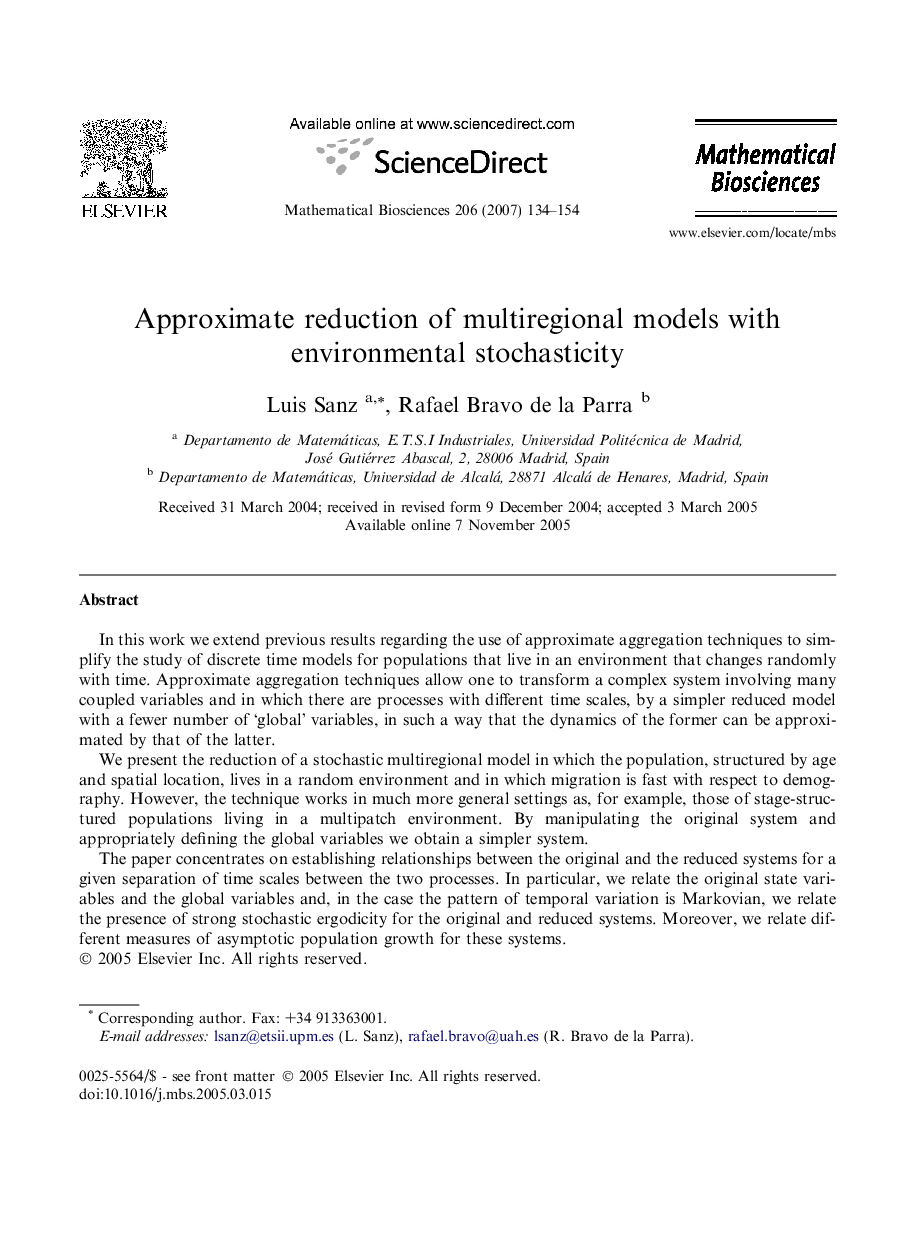| Article ID | Journal | Published Year | Pages | File Type |
|---|---|---|---|---|
| 4501017 | Mathematical Biosciences | 2007 | 21 Pages |
In this work we extend previous results regarding the use of approximate aggregation techniques to simplify the study of discrete time models for populations that live in an environment that changes randomly with time. Approximate aggregation techniques allow one to transform a complex system involving many coupled variables and in which there are processes with different time scales, by a simpler reduced model with a fewer number of ‘global’ variables, in such a way that the dynamics of the former can be approximated by that of the latter.We present the reduction of a stochastic multiregional model in which the population, structured by age and spatial location, lives in a random environment and in which migration is fast with respect to demography. However, the technique works in much more general settings as, for example, those of stage-structured populations living in a multipatch environment. By manipulating the original system and appropriately defining the global variables we obtain a simpler system.The paper concentrates on establishing relationships between the original and the reduced systems for a given separation of time scales between the two processes. In particular, we relate the original state variables and the global variables and, in the case the pattern of temporal variation is Markovian, we relate the presence of strong stochastic ergodicity for the original and reduced systems. Moreover, we relate different measures of asymptotic population growth for these systems.
